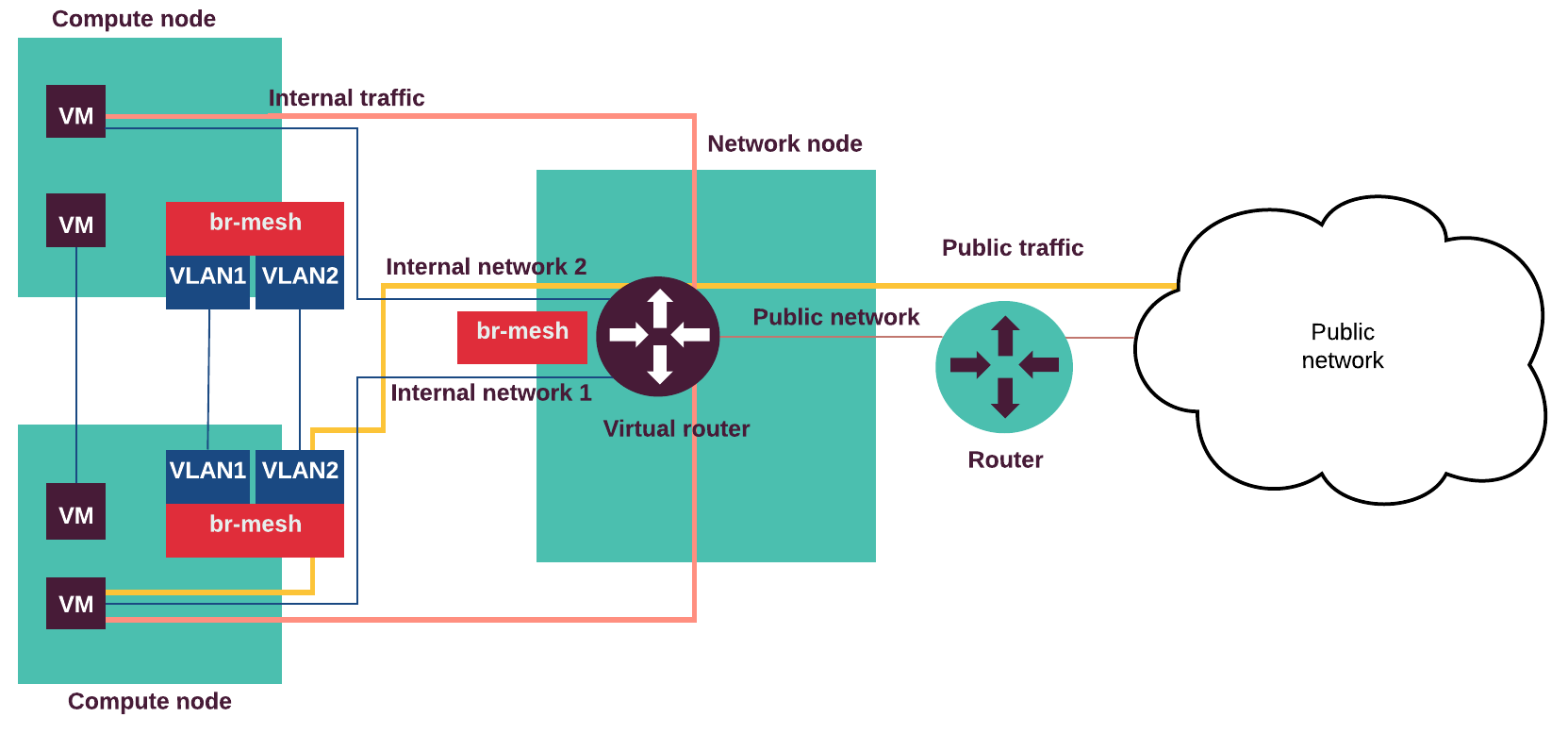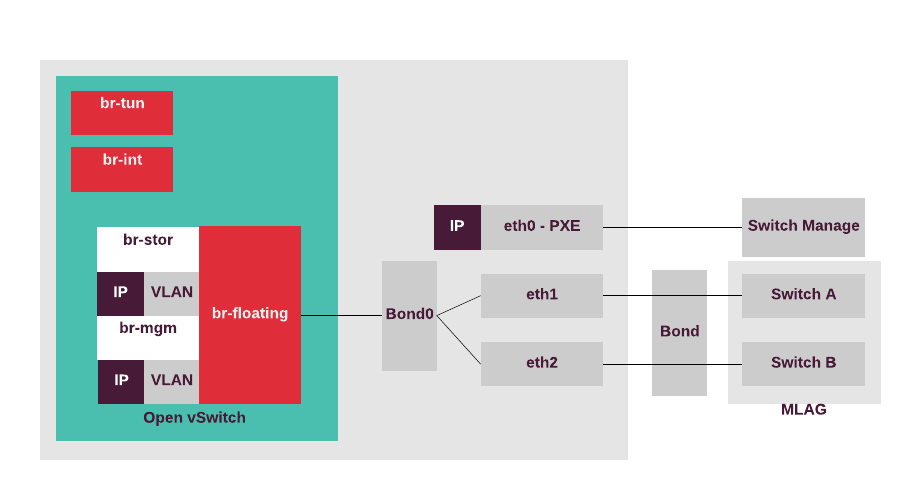Neutron VLAN tenant networks with network nodes (no DVR)
Neutron VLAN tenant networks with network nodes (no DVR)¶
If you configure your network with Neutron OVS VXLAN tenant networks with network nodes and without a Distributed Virtual Router (DVR) on the compute nodes, all routing happens on the network nodes.
The following diagram displays internal and external traffic flow:

The internal traffic from one tenant virtual machine located on virtual
Internal network 1 goes to another virtual machine located in
the Internal network 2 through the virtual routers on the network node.
The external traffic from a virtual machine goes through the Internal
network 1 and the tenant VLAN (br-mesh) to the DVR on the
network node and through the Public network to the outside network.
The network node terminates private VLANs
and sends traffic to the external provider of VLAN networks.
Therefore, all tagged interfaces must be configured directly
in Neutron OVS as internal ports without Linux bridges.
Bond0 is added into br-floating, which is mapped as physnet1
into the Neutron provider networks. br-floating is patched with
br-prv which is mapped as physnet2 for VLAN tenant
network traffic. br-mgm is an OVS internal port with a tag and
an IP address. br-prv is the Neutron OVS bridge which is
connected to br-floating through the patch interface. As storage
traffic handling on the network nodes is not required, all the
sub-interfaces can be created in Neutron OVS which enables creation
of VLAN providers through the Neutron API.
The following diagram displays the compute nodes configuration for the use case with Neutron VLAN tenant networks and external access configured on the network node only:
